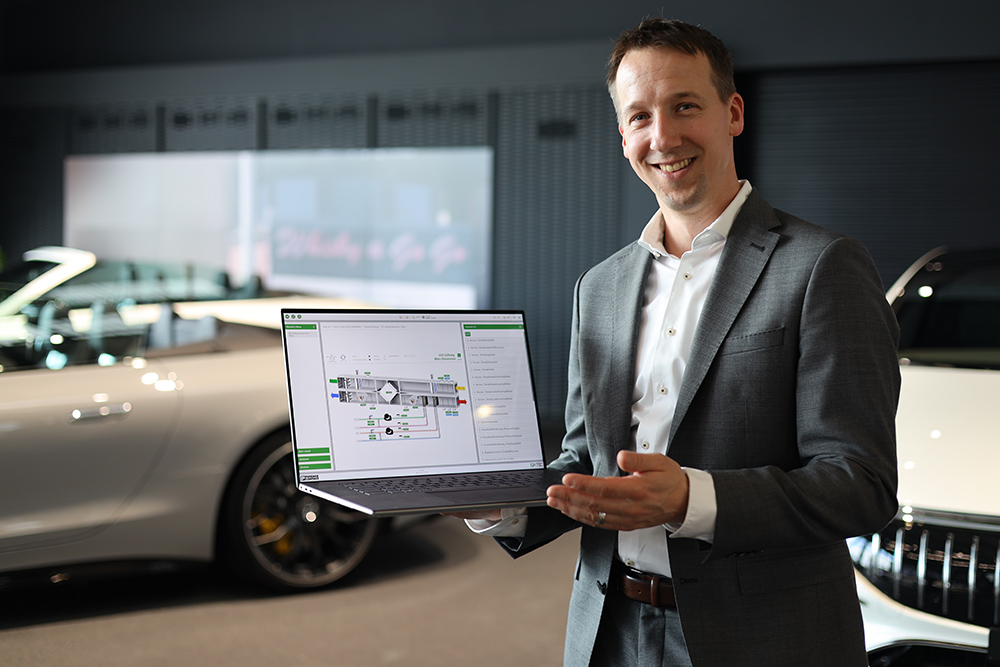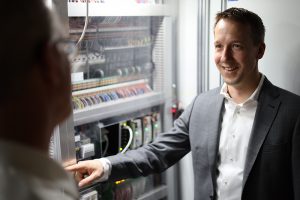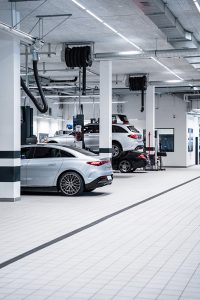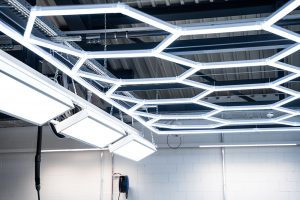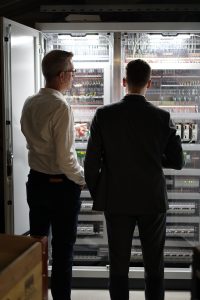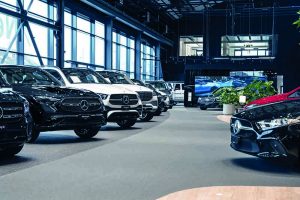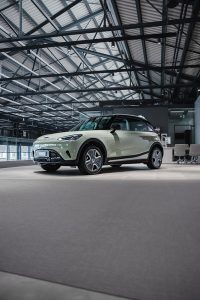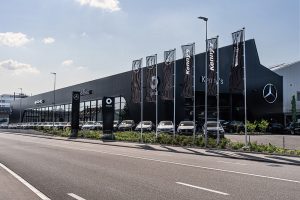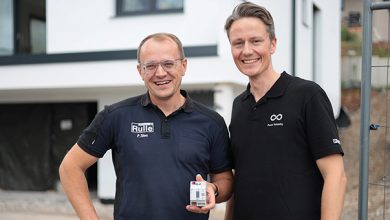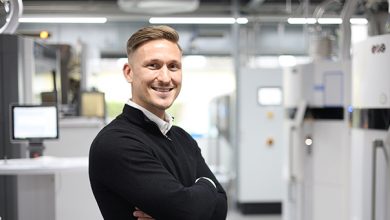The Kenny’s Auto-Center is one of the most renowned car dealerships in Switzerland. The company is not only known for its automobile stars, but also for its invitation to exquisite “Käfeli”. The new location in Dietlikon, which is also causing a stir in terms of design-in and building automation, fits in well with this. We visited the expert who made the building smart.
The new headquarters of probably Switzerland’s best-known Mercedes dealer in the historic Demag factory building in Dietlikon near Zurich is an architectural dream made of steel, sheet metal and glass. The exciting, open construction of the old industrial plant stands in delightful contrast to the mobile beauties that are presented here. In the middle of it all is a café-bar as a trademark, where the legendary “Käfeli” is served by the in-house barista.
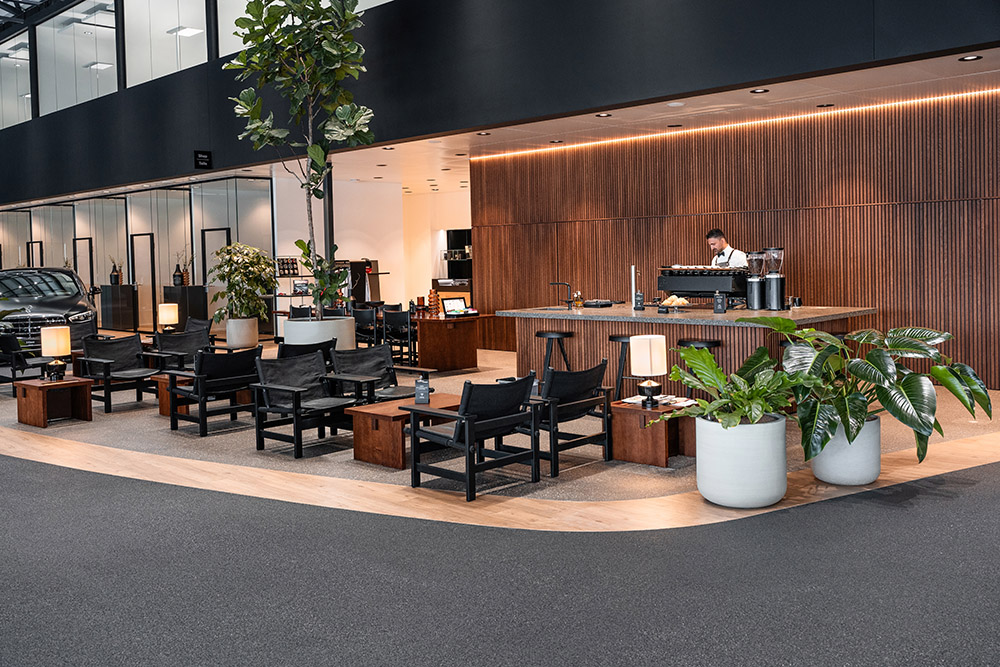
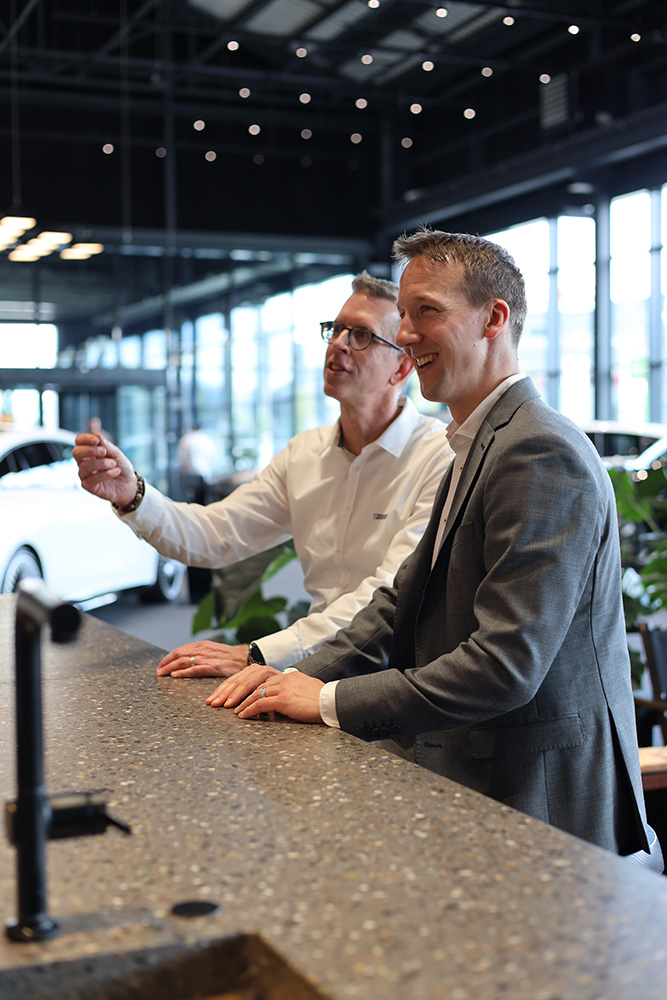

But when it comes to energy and efficiency, such old industrial buildings tend to be a gray area. Heat or cold usually find their way inside without any major hurdles. Neither insulation nor ventilation were provided by the original builders. Long underpants in winter or shorts in summer were once required for the necessary air conditioning. Not quite the right wardrobe for a modern car dealership in which the gleaming model range from Stuttgart is presented.
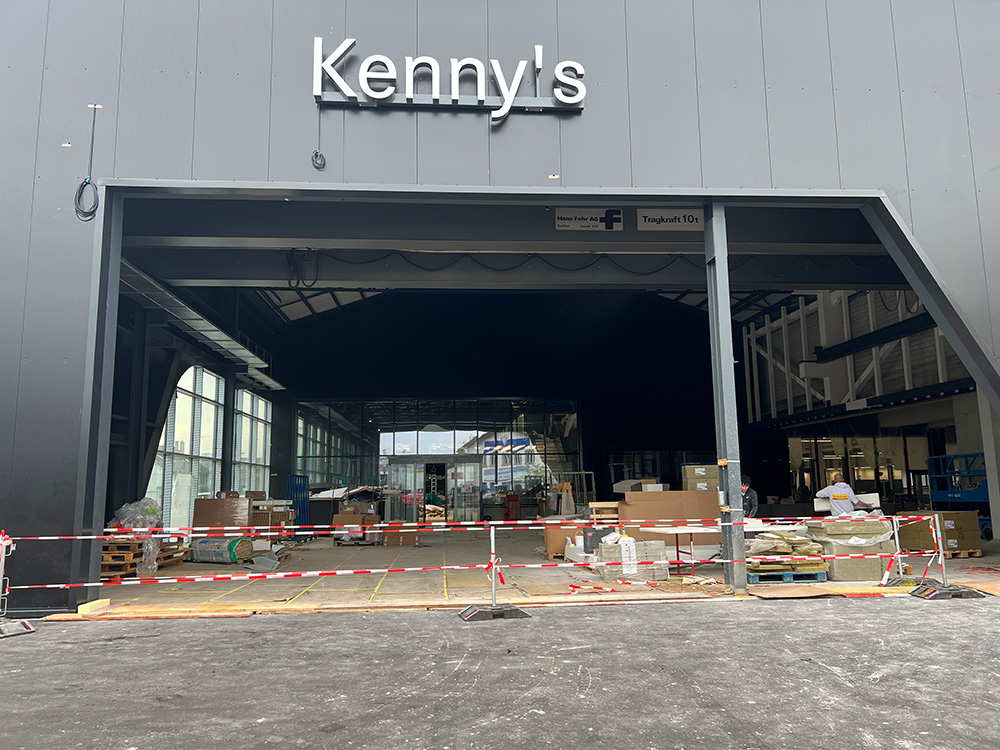
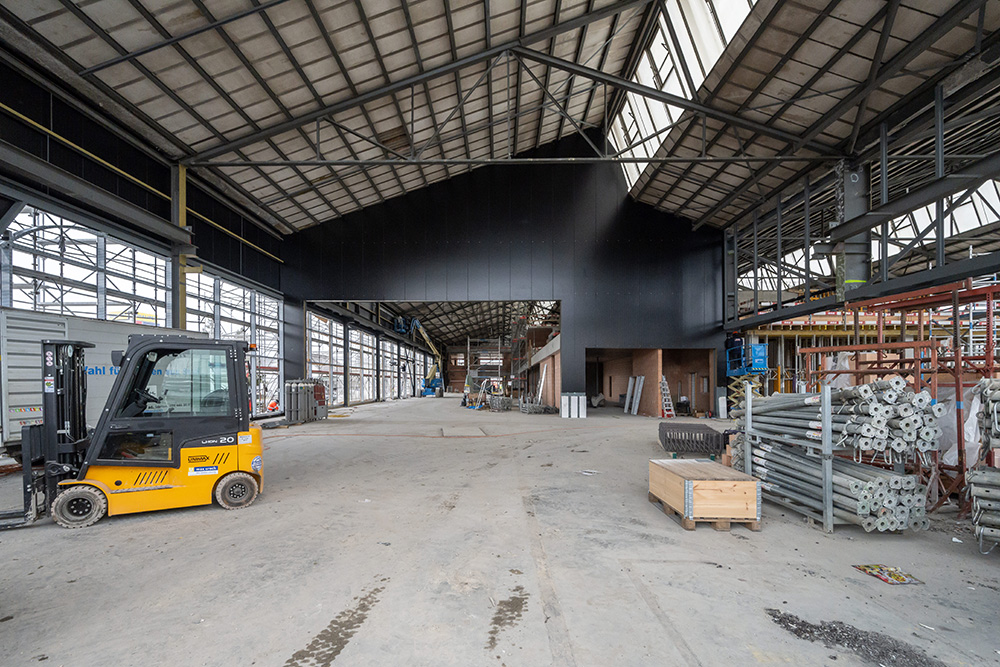
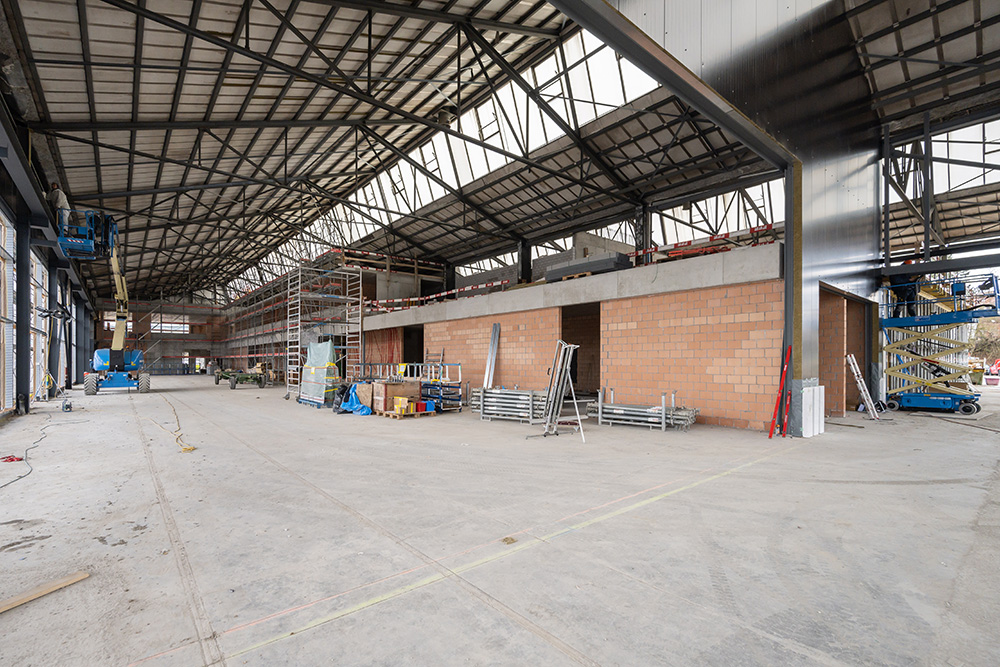
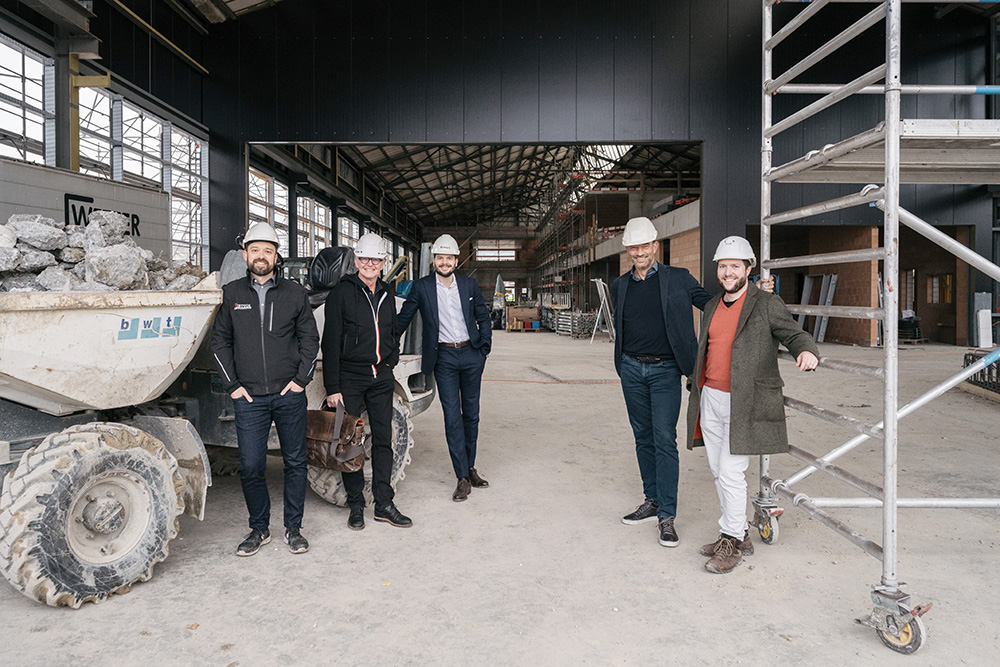
And so Thomas Nebl comes onto the scene. The likeable 35-year-old technician and qualified automation manager is the man who wants to teach the old hall its energetic manners. The owner of the company Gatec AG specializes in building management systems. Together with his partner Gaspare Accardi and a team of eight, he is responsible for the innovative building automation that has turned the old energy guzzler and its annexes into a 6,200 m2 CO2-neutral building. “We have been active in Switzerland for twelve years and plan various properties in the commercial and industrial sectors. We have focused on building automation, measurement and control technology and control engineering, both in new and existing buildings.”
At Kenny’s, one could argue about the definition of old or new building, as the old hall was of course completely gutted, the entire outer shell adapted to the current state of the art and supplemented with new extensions. A solar system measuring over 2,000 m2 with a peak output of 500 kW powers the business and enables electric vehicles to be charged. Together with geothermal probes, it covers the company’s energy and heating requirements. The system produces a surplus of energy in the summer months, which is currently still being fed into the public grid. In the future, however, it will be fed into electric vehicles via 30 charging stations and stored. This will turn a car dealership into a kind of power station with a buffer storage function for the power grid.
Comfortable temperatures despite a tin roof
The range of workshops fits in with the overall concept: the second floor of the Auto Center is designed for extensive work on alternative drives, including high-voltage batteries. And where does “standing mobility” make more sense than here, where the powerful batteries of the e-mobility vehicles waiting for buyers could absorb excess electricity bidirectionally and release it again during peak loads? This addition is planned as soon as the cars are able to do so.
Thomas Nebl explains the task: “We have a lot of very different trades here that we have to automate, so we have to make them talk to each other. The task is to make the building intelligent.” He points around: “A particular challenge is, of course, the air conditioning of this hall. Cooling in summer, heating in winter and doing it as energy-efficiently as possible. So the ventilation systems have to be able to communicate with the heating system.”
Energy matters
However, Thomas Nebl’s team is not only doing pioneering work in technical terms: “A lot has happened in Switzerland in recent years in terms of energy policy and building planning. Initially, efficiency was only a marginal issue, especially for investors and planners. But energy has now become a decisive cost driver for maintenance. With our building automation approach, we are very well positioned in this respect.”
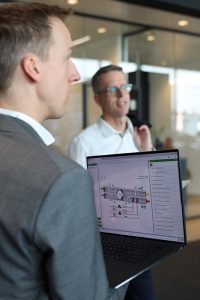
In contrast, convenience and user-friendliness still hardly play a role for industrial and commercial customers. However, Nebl explains with a small smile: “It is of course much easier to operate a building cost-effectively if you can monitor and control maintenance and operation centrally. That was also a big issue here at Kenny’s in this old industrial hall.” Room automation, on the other hand, hardly played a role in the Autocenter, as the specified space utilization was defined from the outset in the planning of the Autocenter.
Thomas Nebl and his team joined the project a good two years ago. Gatec was already involved in the planning phase, even before the implementation planning had been drawn up. “This allowed us to take the building automation into account right from the start.” Little time for such a comprehensive measure: “That was the big challenge. Of course, the hall was already there, but not much more. In building technology, things always have to move pretty quickly. It was very exciting and intensive.”
Nebl and his team were able to rely on a unique selling point of Phoenix Contact. “We were able to use automatic tagging when setting up the data management level. Once the individual controller has been set up and you want to transfer the information to the control level, this management level virtually configures itself. Not so much engineering is required. This only works with Phoenix Contact. With macros and automatic tagging as well as cooperation with the experts at Phoenix Contact, we were able to save a good four weeks of time with virtual commissioning. That was crucial given the tight schedule. We had the basics from Phoenix Contact and were able to refine this through our work.”
Energy Management
During the tour of the impressive car dealership, Thomas Nebl explains where his company worked in detail: “We did almost everything in terms of heating applications, starting with the large circulating air heaters and coolers.” Large black boxes can be seen on the ceiling: “These are fans that work wherever large volumes are required. In the offices, we work with heating and cooling ceilings, which work on the same principle, but tend to work across the surface. For ventilation, we use volume flow controllers that can be individually supplied with more or less air. In the roof area, we have housed the heating applications, the pre-regulation and the ventilation monoblock with the large fans.”
The concept in the delivery area is a very special highlight. The handover of the high-quality vehicles that find their buyers here is a real celebration. “There’s a real show with a curtain, music and lights.” This special feature was also combined in the Emalytics system from Phoenix Contact.
Even a building like this never stops learning – the planners and operators still have a lot planned. Thomas Nebl explains: “A surface heat pump was recently put into operation. At the same time, an energy management concept is being set up that incorporates the building’s data. This allows us to use the surplus energy for the chillers, the heat pump or energy storage. Thanks to Phoenix Contact’s open system, we can connect such technologies as soon as they are available.” For Nebl, it is particularly exciting that the technologies in the control system are not closed: “We used to have various subsystems that worked with different protocols. Here, they are combined in a single system, turning the building into a learning organism.”
Feeding data with a system
The task at Kenny’s is long-term: “We will continue to provide support in the area of energy and operational consulting in the future. If individual parameters change, this has an impact on the entire system. We then have to make adjustments.” The automation professionals at Gatec usually do this via remote access. “Since we work completely digitally, such an adjustment only takes a few minutes.”
However, teachers and buildings also had to do detention: the several thousand information points, which constantly sent their data to the controller, pushed the control system to its limits. Runtime problems were the result. Control commands could no longer get through. “With the support from Phoenix Contact, however, we came up with a good solution. We virtually slowed down the controllers and thus reduced the data flow.”
This means that Kenny’s will not only load bi-directionally in future, but will also continue to learn. The transfer of knowledge goes in both directions, including from the application to the manufacturer. And the building provides a constant stream of data anyway, which can be used to fine-tune the installed systems over the years.
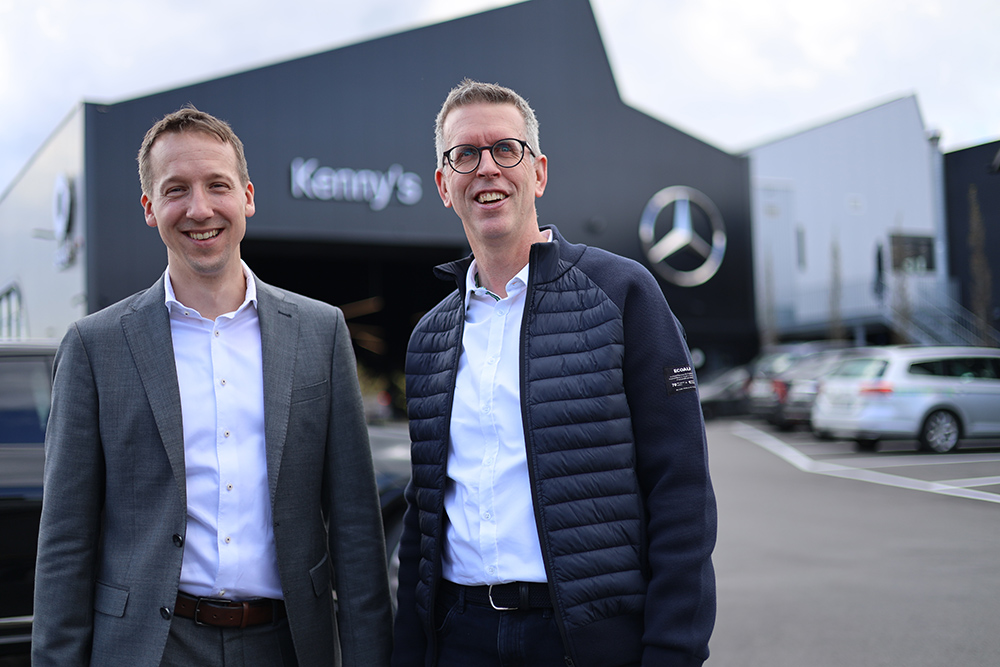
Kenny’ Auto Center
Gatec AG
Phoenix Contact Gebäudeautomation
Phoenix Contact Schweiz
